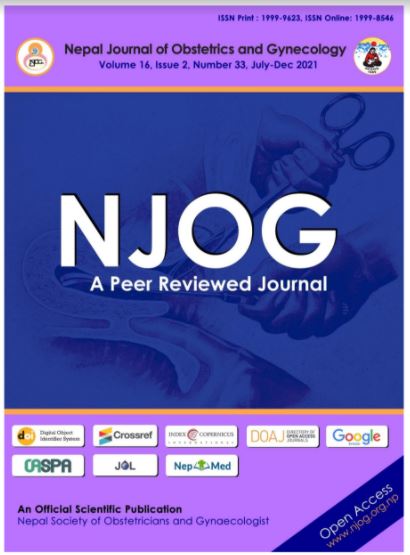Diagnosis and management of ectopic ureter in a low resource setting – A case series
Keywords:
diagnosis, ectopic ureter, urinary incontinenceAbstract
Aims: To review the experience of women and girls treated for ectopic ureter in Surkhet through the fistula camps and Fistula Treatment Centre and analyse the diagnostic method, management and outcome.
Methods: This was a retrospective study of the patients with ectopic ureter who received treatment in Surkhet since 2009. Data were analysed from patient records and interviews.
Results: Seven patients were diagnosed with ectopic ureter over a period of 12 years. Five patients were prepubertal with age range of 7 - 15 years. History of continuous incontinence with normal voiding was suggestive of ureteric fistula in six out of seven cases. The seventh case had massive ureterocele in the distal end of the duplex right ureter. Ultrasound suggested a diagnosis of duplex collecting system in five cases. IVU or CT IVU suggested duplex ureter in only three cases. Diagnosis was confirmed by examination under anaesthesia after i.v. frusemide in six cases. All cases were managed by implantation of the ectopic ureter into the bladder. In the case with ureterocele heminephrectomy was performed. All seven patients are well at follow-up between 6 months and five years after presentation.
Conclusion: Ectopic ureter is a treatable cause of urinary incontinence and the diagnosis may be overlooked. A lifelong history of continuous urinary leakage with normal voiding, in absence of trauma or surgical procedure should raise the suspicion. Examination under anaesthetic and ultrasound proved most effective in confirming the diagnosis
Downloads
Downloads
Published
How to Cite
Issue
Section
License
Copyright (c) 2022 Shirley Heywood, Shuvechchha Dewa Shrestha

This work is licensed under a Creative Commons Attribution-NonCommercial 4.0 International License.
Copyright on any research article in the Nepal Journal of Obstetrics and Gynaecology is retained by the author(s).
The authors grant the Nepal Journal of Obstetrics and Gynaecology a license to publish the article and identify itself as the original publisher.
Articles in the Nepal Journal of Obstetrics and Gynaecology are Open Access articles published under the Creative Commons CC BY-NC License (https://creativecommons.org/licenses/by-nc/4.0/)
This license permits use, distribution and reproduction in any medium, provided the original work is properly cited, and it is not used for commercial purposes.



